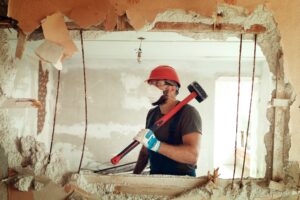The story of the 101 Ash Street skyscraper is more than just a headline; it is a stark, public lesson for every property owner in San Diego. What began as an ambitious plan to consolidate city offices into a prominent downtown high-rise has devolved into a years-long, multi-million-dollar scandal of incompetence, financial waste, and serious health risks. The building, acquired by the city in a costly and controversial lease-to-own deal, remains vacant, uninhabitable, and a towering monument to mismanagement. The core reason for this catastrophic failure is a substance hidden within its walls: asbestos.
The saga began in 2017 when the city, under then-Mayor Kevin Faulconer, finalized the acquisition of the former Sempra Energy headquarters. A critical failure occurred at the very outset: the city committed to the deal without conducting proper inspections, a shocking oversight for a building of its age where the presence of asbestos was a near certainty. This initial blunder set the stage for disaster. When renovation work commenced, contractors disturbed the asbestos-containing materials, releasing toxic fibers and contaminating the building so thoroughly that it was deemed unsafe for occupation.
The consequences were immediate and severe. The city was forced to evacuate hundreds of employees who had been moved into the building, instructing them to leave personal belongings behind to prevent further contamination. A subsequent legal claim alleged that these employees were directly exposed to the hazardous fibers, transforming a story of financial mismanagement into one of immediate and grave health risk. For years, the building has sat empty, with San Diego taxpayers footing the bill for a vacant, “asbestos-riddled building” that cannot be used. The total cost to rectify the situation is immense, with proposals to transform the blighted skyscraper into affordable housing units facing a massive, and still not fully disclosed, price tag for abatement and renovation.
The key takeaway from this civic disaster is a sobering question: If the City of San Diego, with its teams of lawyers, planners, and vast resources, could mismanage an asbestos project so catastrophically, how can an average homeowner feel confident about the safety of their own renovation?
This question is not hypothetical; it is a matter of urgent local concern. San Diego’s history as a hub for construction and manufacturing means that for decades, asbestos was a primary component in countless building materials. This legacy has had tragic consequences. The city has one of the highest rates of mesothelioma in the United States, a rare and aggressive cancer caused almost exclusively by asbestos exposure. This grim statistic transforms the threat from an abstract construction issue into a deeply personal public health crisis affecting our communities.
For homeowners, the risk is pervasive. Nearly all structures built in San Diego before the 1980s are presumed to contain asbestos.8 It can be found in a wide array of common materials, including “popcorn” acoustic ceilings, vinyl floor tiles and the mastic that holds them down, insulation, roofing materials, pipe wrap, wallboard, and furnace ducts. The 101 Ash Street crisis serves as a powerful wake-up call. It demonstrates that asbestos mismanagement is a project-killing risk with devastating financial and health consequences. It proves that the danger is real, the regulations are complex, and the stakes are incredibly high. Before you begin any remodel, repair, or demolition project in your own home, it is critical to learn the lessons from the city’s failure and address this hidden danger with the seriousness it demands.
Protect your family, your investment, and your peace of mind. The first step is acknowledging the risk. The second is calling a professional. Contact CVE for a free professional asbestos assessment before you renovate.








